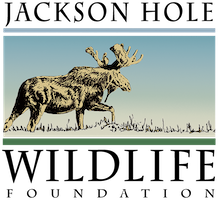Habitat Restoration: Protecting Wild Spaces
Restoring habitat in Jackson and surrounding regions is critical to maintaining healthy ecosystems and supporting the wildlife that depends on them. This area serves as a key migration corridor and year-round home for numerous species, making habitat restoration essential for sustaining biodiversity and ecological balance. Efforts like removing invasive weeds and improving wildlife corridors ensure animals can access the resources they need to survive and thrive.
These restoration projects benefit a wide range of species, including elk, mule deer, pronghorn, moose, and bighorn sheep. Birds such as sandhill cranes and sage grouse also rely on these habitats for nesting and feeding. By improving and protecting these ecosystems, we create a future where wildlife and people can continue to coexist harmoniously in this iconic landscape.
Our Habitat Restoration Projects
JHWF and a team of dedicated volunteers improve wildlife habitat in Sublette and Teton Counties.
Wildlife Friendlier Fencing
Wildlife-friendly fencing projects have a profound impact by allowing animals like pronghorn, elk, and mule deer to migrate freely, reducing injuries, and fostering healthier ecosystems while balancing the needs of landowners and wildlife.
Weeds Project
Invasive weed removal restores native plant ecosystems, creating healthier foraging habitats for wildlife like elk and deer, while relying on dedicated volunteers to preserve this vital landscape.
Questions?
Email Cody Pitz at cody@jhwildlife.org
Jackson Hole Wildlife Foundation
Tax ID # 83-0302830
Office Location:
25 S. Willow St., Suite 10
Jackson, WY 83001
Mailing Address:
PO Box 8042
Jackson, WY 83002
All rights reserved.
Privacy Policy

